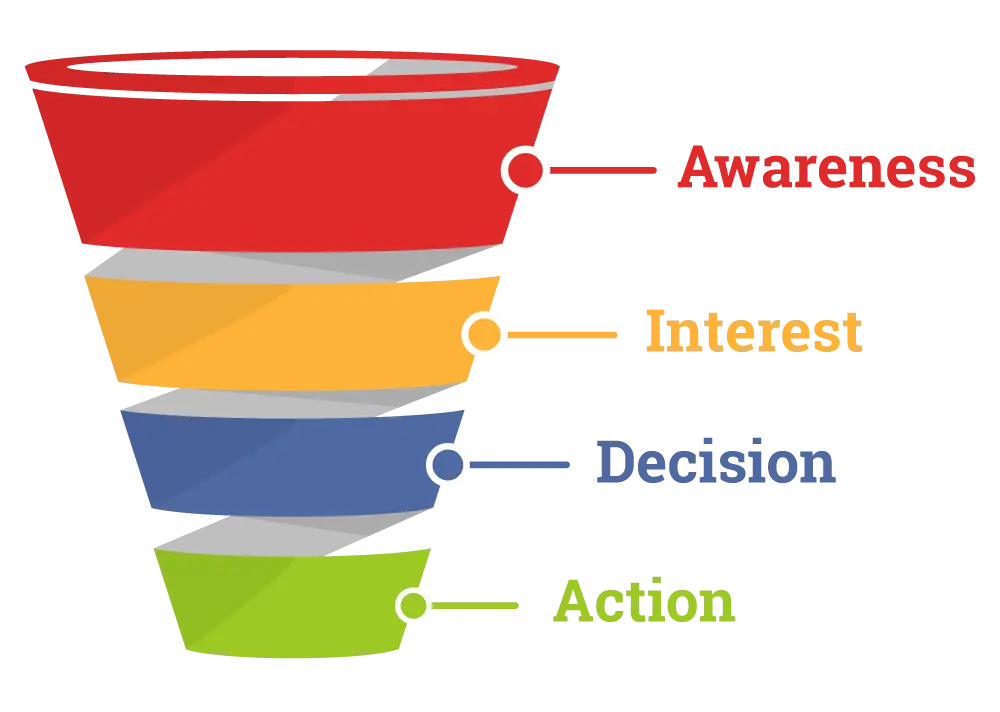How to build and calculate sales funnel conversion?

To run a profitable business, you always need to use all available tools that truly work. These days, every potential buyer has numerous opportunities and options to buy their desired product. Unless, of course, it's something truly unique. How do you ensure your product or service finds a buyer, and how do you convince them to buy it? For example, a sales funnel can help. After all, it's one of the best ways to connect with potential clients.
Sales funnel. What is it?
If you're reading this article, you've likely encountered this concept before and decided to use a search engine to learn more. Let's explore how a sales funnel works, how to create one, and more to learn more about this approach to customer acquisition.
A sales funnel is a system that charts a customer's journey from initial contact with a product or service to purchase. This name is not accidental, as the entire approach is based on the idea that the number of users involved gradually decreases. Therefore, when constructing this concept, an inverted cylinder or something resembling a funnel is used as an image.
The unique feature of this system is the universality of the formula, which always works regardless of the time and period in which the sales funnel is used. The only thing that changes is the tools used for analysis and customer acquisition. After all, 20 years ago, it was enough to launch a new product, and it would almost immediately gain popularity or find its buyer. Now, as I mentioned above, we need new approaches and methods for selling our services and products. For example, use a modern method of promoting your products in the form of an online sales funnel.
To learn how to build a sales funnel, you first need to understand the stages and levels of the sales funnel. We'll do this by examining in detail the levels of interaction with a future client.
The sales funnel structure looks like this:
- ignorance;
- awareness;
- interest;
- consideration;
- intention;
- purchase.
As you can see, the sales funnel stages described above are truly designed to generate interest. Yes, using this formula correctly is slow but sure. After all, everyone agrees that it's much more effective not only to tell your customers about your product but also to find someone who will take advantage of your offer. There are now many services that build sales funnels.
Sales Funnel: Examples
Let's consider situations where this useful tool can be used. Imagine a situation where one person is considering purchasing a mobile phone, while another clearly wants a laptop. In the first case, the buyer might buy a smartphone, tablet, or laptop, but in the second, we already know the buyer needs a specific product. Here, it's worth considering companies like Apple, Amazon, and Netflix. After all, they gained their popularity not only through budget investments in advertising campaigns but also through a thoughtful approach to promoting their products. Their strategies are classic examples of building an ideal business. Therefore, it's important to consider the history of famous brands.
Building a proper sales funnel should be a fundamental part of everything. To do this, you need to analyze your skills or hire a specialist to help you with this. After all, this approach works anywhere and anytime, whether it's a website sales funnel or a wheat harvester. You need to find your customer, figure out who they are, and offer them what they need.
Nowadays, most sales are made through websites. They appear first in search results. Then, when you click on a link, you're swept away by a whirlwind of features, benefits, convenient purchasing terms, and much more. This is how the online sales funnel works. The number of online users is growing rapidly, and it's essential to leverage this.
Here we smoothly move on to the topic of online sales.
Every company that aims to sell through an online store knows that developing and building a sales funnel is the key to successful product promotion. That's why business owners who are truly committed to their business know that Google Analytics is a great tool for this. This service allows you to analyze websites or apps to identify audiences/users and optimize webpage visibility. This service also helps you track sales funnel conversions.
A sales funnel conversion is the number of online store visitors who make a purchase. Finding this number is very simple. Let's look at the formula that will answer the question of how to calculate a sales funnel conversion.
For example, 3,000 people visited your website, but only 3 of them made a purchase. In this case, the conversion is 0.1%: divide 3 by 3,000 and multiply by 100%. You can use data from any convenient period for the calculation. Google Analytics handles all the calculations automatically, making it an indispensable tool. Below are the key characteristics Google Analytics reveals. You define your target audience and how to influence them.
Conclusion
So, what should you pay attention to first when analyzing your website:
- Visitor demographics. Includes gender, age, occupation, and financial solvency;
- The recipient's actions in the mailing list and on the website;
- Purchase history;
- Subscriber life cycle.
These are, of course, only basic metrics, but they are the ones you should rely on first and foremost.
We hope you now understand what a sales funnel is, and these sales funnel examples will help you approach your business more consciously.







